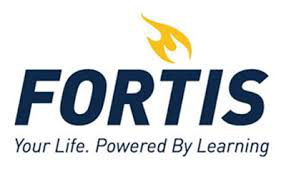November 18th, 2014 by schoolbound
First aid, Band-aid®, Hearing aid, Kool-Aid® … Financial Aid
Typically, “aid” gives some form of help, and financial aid is no different. (Fair enough, Kool- Aid® isn’t the most helpful beverage out there but it is good and makes me smile.)
Financial Aid is a pretty big topic which we will discuss in more detail in the future, but for starters, let’s get the basics down. Financial Aid is a broad term (think Vampire genre) that encompasses a few varieties (think Twilight, True Blood, Vampire Dairies). And the first step towards any type of financial aid is filling out the FAFSA, the Free Application for Federal Student Aid.
First you have everyone’s favorites, SCHOLARSHIPS and GRANTS. Scholarships and grants are free money (literally) because they are gifts from the government, state, a college or a private foundation which you do not have to pay back and may be based on financial need or merit. Most commonly we think of scholarships as awards for academic or athletic excellence but there are also a ton of private scholarships awarded by foundations and companies for all kinds of things like great essays or specific heritages. Oh and don’t forget to read the fine print… some scholarships require maintaining a certain GPA, or a drug-free lifestyle, or speaking at the annual board dinner. Just be sure that once you land that scholarship, you follow the rules to keep it.
Next there are the LOANS. The important thing to remember about loans is that they must be paid back. The bank or government (or whomever is lending you money) and you are agreeing to specific terms on how you will pay that money back – with interest. Your repayment typically begins six months after graduation, and even if you don’t graduate, your loans become due, usually a few months after you are no longer a student. Some loans also require repayment to start immediately after they are handed out.
Within the loan category there are federal student loans, federal parent loans, and private loans. If you need loans for school, you want to take out federal student loans first, which have a maximum amount you can borrow, but also the lowest interest rates. (It is also important to note that taking out a federal student loans helps to establish a credit history—which is hard to do when you are young. And even though the loan is in the student’s name, the parent can make the payments.) If you need more assistance beyond the federal limits (like I did) only then should you look into private loans or parent loans if your parents are able to help.
You will hear the terms “subsidized” and “unsubsidized” thrown around a lot regarding federal loans. A subsidized loan is a need-based loan where the government pays the interest on your loan until you graduate, whereas with an unsubsidized loan you are responsible for all of the interest and all students are eligible. Many students come out of school with loans. The key is, only borrow what you need and be realistic about the payments you will have to make when you graduate.
Stay tuned for Financial Aid 201 where we will delve into the ins and outs of loans.
Another option is WORK-STUDY. The federal government and some states and colleges have work-study programs for students with financial need, allowing the student to earn money toward tuition, often with work in the student’s area of interest. Many colleges and universities also have student employment opportunities on- or off-campus, which are not always need-based. Usually these jobs are high in demand, so explore your options early.
But in order to be eligible to receive a state grant, federal loan, or work-study program, what do you have to fill out?!!!
All together now – THE FAFSA!

